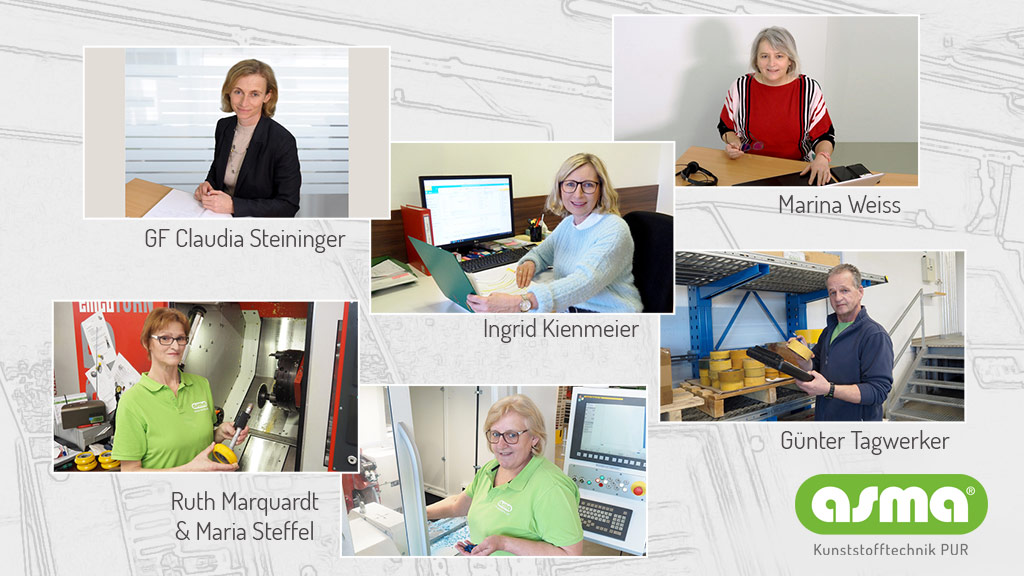Partial retirement allows for a smooth transition to retirement. At asma, four employees are currently using this opportunity.
Company owner Claudia Steininger, in her function as HR manager, welcomes this working model: “Partial retirement enables older employees to reduce their working hours to 40-60% for five years before they retire. This allows for a smooth transition to retirement. The employees lose neither pension benefits nor entitlements to sick pay, severance pay or entitlements from unemployment insurance”.
Even if well-deserved retirement is still a long way off for most employees, asma is looking to the future with precaution. “For every employee, asma funds a pension insurance (tax-free future security) after one year on the job. In this way, we save money for all employees and workers, which they can take with them when they leave the company, regardless of whether they retire or change careers. This is one of many goodies that we offer our employees,“ says Claudia Steininger.
Why partial retirement? We asked this question to those people who took advantage of the partial retirement offer at asma. The motives are very different.
Marina Weiss – IT:
Partial retirement is a way for me to be able to visit my mother, who suffers from dementia, more often. Necessary trips, errands or just visits are easier for me to cope with. I am very happy that asma supports this opportunity.
Ingrid Kienmeier – Accounting
With semi-retirement, there are many ways to make good use of the free time you have gained. Just going for a walk or exercising, reading an interesting book, trying out some new recipes, going out with friends, learning a new language, looking after grandchildren, supporting working parents and much more. It’s a great way to slowly prepare for retirement so that you can do work without stress and with a lot of joy. However, this requires a mutual agreement between employee and employer.
Günter Tagwerker – warehouse
My wife retired in February. Thanks to the offer of partial retirement, we can spend more time together and with the grandchild. When I retire at the age of 62, I have worked 47 years without a break. And yes, even if you don’t want to admit it: To be honest, at the age of 60 you no longer have your full power.
Maria Steffel & Ruth Marquardt – turning department
We are already in the fifth and final year of semi-retirement. It is a very flexible and great working model. Together we worked out a work plan that suited us and presented it to the company management. We share the working week with the same shift, so that we each work alternately two weeks, three days (Mon-Tue-Wed) or two days (Thu-Fri). In between there are always days off – great :-). If necessary, we also swap a day with each other from time to time. It is important that one of us is always present. This has worked extremely well for the past five years. The only downside is that we almost never work together and now in Corona times our contacts are limited to phone calls. A big thank you at this point to the company management, which made this flexible division of labour possible for us.

A report of Eva Brandeis
